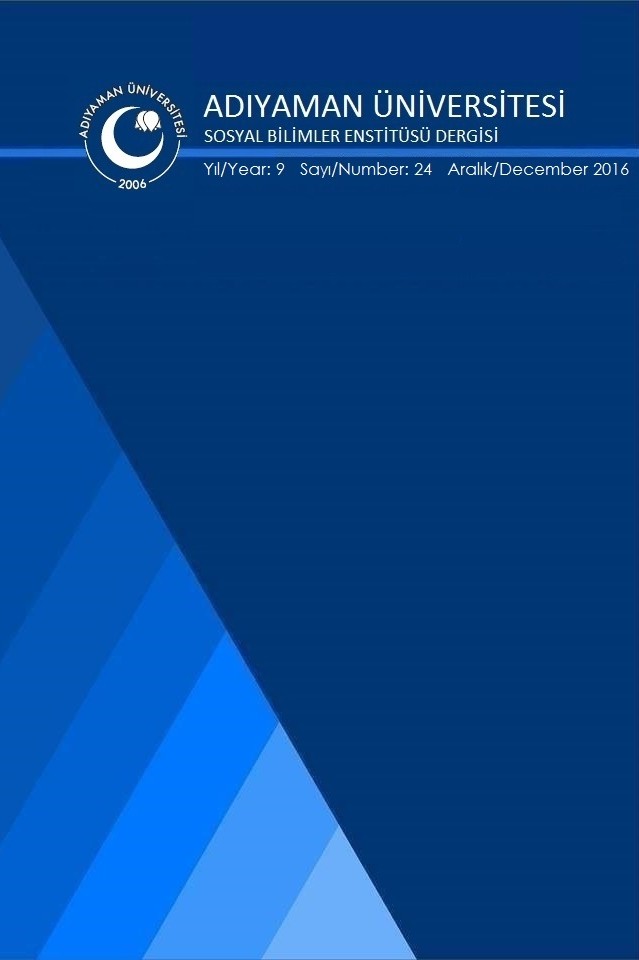ESKİÇAĞ DÜNYASINDA TANRI-KRAL İMAJI ÖRNEKLEMELERİ ÜZERİNE BİR DEĞERLENDİRME
En eski çağlardan itibaren insanoğlu yaratılışlarını sorgulamaya başladı. Nasıl? sorusuna, inandıkları tanrılarla cevaplar aradılar ve böylece pek çok mitoslar oluşturdular. Soyun babadan aktarıldığını keşfettikleri zamana kadar, kadının doğurganlık özelliğinden dolayı anaerkil anlayışa sahiplerdi. Ancak fiziksel gücün ön plana çıktığı bu çağlarda erkek, gücünün ve soyunun devamını arzuluyordu. Oluşan ilk medeniyetin insanları, krallarına ve ailelerine tanrıların yeryüzündeki temsilcileri olarak inandıkları için kendi ataerkil yapılarını, kurguladıkları tanrıların yaşamlarında biçimlendirdiler. Kadını sosyal hayatta geri planda bıraktıkları gibi, yarattıkları tanrıçaların özelliklerini biçimlerlerken, insani kadınsal özelliklerle beraber insanüstü güçler verdiler. İlginç olan ise, savaşları yapan, istilalarda yer alan, yıkımlar meydana getiren egemen cins erkeklerin, felaketlerin, savaşların, kavgaların sebebi olarak tanrıçaları göstermiş olmalarıdır. Fakat erkeğin toplumdaki yeri daha da artarak devam etti. Yönetimde, ekonomide, dinsel idarede egemenliklerini koruyan erkek liderler iktidarlarını hemen hemen sınırsızca güçlendirecek başka bir formül buldular. Hem liderliği hem de ilahi bir gücü elinde tutan “tanrı-kral” sıfatını. Bu çalışmadaki amacımız, Eskiçağ dünyasını “tanrı-kral” kavramını örnekler çerçevesinde değerlendirmektir.
Anahtar Kelimeler:
Mitoloji, Tanrı-Tanrıça, Eskiçağ'da Yönetim
ON EXAMPLES OF THE GOD-KING IMAGE IN THE ANCIENT WORLD AN EVALUATION
From the earliest times, human beings began to question their creation. How? They sought answers with the gods they believed in and thus formed many myths. Until the time they discovered that the ancestry was inherited from the father, they had a matriarchal understanding due to the fertility of the woman. However, in these ages when physical strength was at the forefront, men wanted the continuation of his power and lineage. The people of the first civilization formed their patriarchal structures, since they believed their kings and families as representatives of the gods on earth, they formed their own patriarchal structures in the lives of the gods they constructed. As they leave women in the background in social life, while shaping the characteristics of the goddesses they created, they gave superhuman powers along with the human female characteristics. What is interesting is that the dominant sex men who waged wars, took part in invasions and caused destructions showed goddesses as the cause of disasters, wars and fights. But the male's place in society continued to increase. Male leaders, who retained their rule in administration, economy, and religious administration, found another formula that would strengthen their power almost limitlessly. The title of "god-king" holding both leadership and divine power. Our aim in this study is to evaluate the concept of "god-king" in the ancient world within the framework of examples.
Keywords:
Mythology, God-Goddess, Rule in ancient times.,
___
Tacitus, (2004). Annales ( transl.by A.J. Woodman). Cambridge.Hesiodos, Theogonia & İşler ve Güçler (2019). (çev. A. Erhat-S. Eyüpoğlu) Türkiye İş Bankası Kültür Yayınları. İstanbul.
- ISSN: 1308-9196
- Yayın Aralığı: Yılda 3 Sayı
- Başlangıç: 2008
- Yayıncı: Adıyaman Üniversitesi
Sayıdaki Diğer Makaleler
SOSYAL BİR OLGU OLARAK "KUMALIK"
ENTELEKTÜEL SERMAYE VE YENİLİKÇİLİĞİN İŞLETME PERFORMANSINA ETKİSİ
GAZİANTEP İLİ AR-GE MERKEZLERİ VE İNOVASYON PERFORMANS GÖSTERGELERİ
TÜRKİYE'DE DİN VE KADIN DOĞURGANLIĞI: İSLAMİ BİR BAĞLAM
ESKİÇAĞ DÜNYASINDA TANRI-KRAL İMAJI ÖRNEKLEMELERİ ÜZERİNE BİR DEĞERLENDİRME
TÜRKİYE’DE SİYASAL PAZARLAMA ALANINDA YAYINLANAN TEZLERİN BİBLİYOMETRİK ANALİZİ
Hüseyin ŞIK, Mehmet Sami SÜYGÜN
COVID 19 PANDEMİ SÜRECİNDE ORTAOKUL ÖĞRENCİLERİNİN DİJİTAL OKURYAZARLIK DÜZEYLERİNİN İNCELENMESİ
